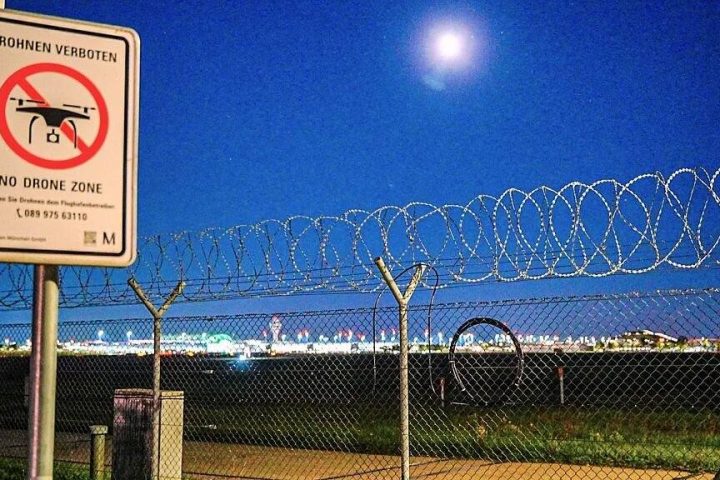Modern warfare has transcended physical battlefields to encompass a vast digital domain where nations attack critical infrastructure, steal military secrets, manipulate elections, and sabotage economies without firing a single shot. As we navigate through 2025, cyberwarfare has evolved from a nascent threat to a primary instrument of statecraft, with sophisticated nation-state actors launching thousands of operations daily against adversaries’ networks. The invisible nature of these attacks makes them particularly dangerous—devastating cyber offensives can occur without public awareness until catastrophic damage manifests. Understanding how nations conduct digital warfare, what targets they prioritize, and how conflicts unfold in cyberspace is essential for grasping 21st-century geopolitics and the security challenges that define our era.
The Evolution of Cyberwarfare
Cyberwarfare didn’t emerge fully formed but evolved gradually as nations recognized the internet’s strategic military potential alongside its civilian applications.
From Espionage to Warfare
Early state-sponsored cyber activities focused primarily on espionage—stealing government secrets, military plans, and intellectual property. These operations, while serious, resembled traditional intelligence gathering conducted through new means. However, capabilities and ambitions expanded. Nations developed offensive cyber weapons designed not merely to collect information but to disrupt, degrade, or destroy adversary systems.
The 2010 Stuxnet attack on Iranian nuclear facilities marked a watershed moment, demonstrating that cyber weapons could cause physical destruction of critical infrastructure. This sophisticated malware, widely attributed to the U.S. and Israel, destroyed centrifuges by manipulating their control systems—an act of sabotage achieved entirely through code. Stuxnet proved that cyberattacks could achieve strategic objectives previously requiring kinetic military force.
Since then, cyberwarfare has proliferated. Russia’s cyber operations against Ukraine beginning in 2014 combined espionage, propaganda, and destructive attacks targeting power grids and government systems. North Korea’s attacks on Sony Pictures in 2014 demonstrated that even relatively isolated nations could launch damaging operations. China’s extensive cyber espionage campaigns extracted trillions in intellectual property. By 2025, virtually every nation with significant technical capabilities maintains offensive cyber programs.
Key Characteristics of Cyber Conflict
Cyberwarfare differs fundamentally from traditional military conflict in ways that shape strategy, tactics, and international law. Attribution challenges make identifying attackers difficult, enabling plausible deniability. Low entry costs allow relatively modest nations or non-state actors to threaten superpowers. Asymmetric advantages mean smaller nations can inflict disproportionate damage on more powerful adversaries. Speed of attack allows devastating operations to unfold in minutes rather than days or months.
The lack of clear boundaries between war and peace creates ambiguity—are we currently at cyberwar with adversary nations conducting ongoing operations below armed conflict thresholds? Dual-use infrastructure means the same networks carrying civilian communications also carry military traffic, complicating targeting and creating risks to non-combatants.
Major State Actors and Their Cyber Capabilities
Understanding the cyberwarfare landscape requires examining the primary state actors, their capabilities, and strategic objectives driving their digital operations.
United States: Offensive and Defensive Leader
The United States maintains the world’s most sophisticated cyber capabilities through organizations including U.S. Cyber Command, the National Security Agency, and the CIA. American capabilities span comprehensive intelligence collection from global networks, offensive operations targeting adversary infrastructure, and defensive systems protecting critical infrastructure and government networks.
U.S. strategy emphasizes deterrence through demonstrated capability, forward defense that disrupts adversary operations in their networks, and partnerships with allies sharing intelligence and coordinating responses. However, American dependence on digital infrastructure creates vulnerabilities—the U.S. has more to lose from unrestricted cyberwarfare than less digitized adversaries.
China: Industrial-Scale Cyber Espionage
China operates perhaps the world’s largest cyber espionage apparatus, focused heavily on economic and military intelligence collection. Chinese operations, attributed to units within the People’s Liberation Army and Ministry of State Security, have systematically targeted Western companies, governments, and research institutions for decades.
- Advanced Persistent Threats (APTs): Sophisticated, long-term intrusions targeting specific organizations for ongoing intelligence collection
- Supply chain compromises: Infiltrating software and hardware supply chains to gain access to downstream targets
- 5G infrastructure positioning: Leveraging global telecommunications equipment presence for potential intelligence or disruption capabilities
- Intellectual property theft: Systematic campaigns stealing trade secrets, research data, and proprietary information to advance Chinese industries
China’s cyber strategy serves national development goals through technology acquisition and economic advantage while preparing capabilities for potential conflict scenarios, particularly concerning Taiwan.
Russia: Disruptive Operations and Information Warfare
Russia employs cyberwarfare as an integral tool of statecraft, combining technical operations with information warfare in coordinated campaigns. Russian capabilities, attributed to military intelligence (GRU), foreign intelligence (SVR), and Federal Security Service (FSB), specialize in destructive attacks on critical infrastructure, election interference and political manipulation, disinformation campaigns amplified through cyber means, and criminal proxies providing plausible deniability.
Russian operations demonstrate creativity and willingness to accept risks that other nations avoid. From power grid attacks in Ukraine to election interference in Western democracies, Russian cyber operations seek to undermine adversaries’ political cohesion, economic stability, and international standing. The approach reflects asymmetric strategy—using cyber capabilities to counter conventional military advantages of more powerful adversaries.
Iran and North Korea: Developing Cyber Powers
Iran and North Korea, despite facing international isolation and sanctions, have developed significant cyber capabilities serving their strategic needs. Iran conducts destructive attacks against regional adversaries, particularly Saudi Arabia and Israel, cyber espionage targeting dissidents and opposition groups, and denial-of-service attacks disrupting targeted organizations and governments.
North Korea uses cyberattacks for financial gain through cryptocurrency theft and banking system attacks, international espionage stealing military and political intelligence, and occasional destructive operations like the Sony Pictures hack. Despite limited resources, North Korea’s dedicated cyber units have pulled off sophisticated operations generating hundreds of millions in revenue while advancing strategic objectives.
Primary Targets in Modern Cyberwarfare
Understanding what nations target in cyber operations reveals strategic priorities and potential vulnerabilities requiring protection.
Critical Infrastructure
Power grids, water systems, and energy infrastructure represent prime targets because disruption affects entire populations and economies. Successful attacks could cause cascading failures across interdependent systems. Transportation networks including aviation, rail, and shipping systems could be disrupted, causing economic damage and public panic. Financial systems including banking networks, stock exchanges, and payment processors could be manipulated or disabled. Healthcare infrastructure including hospitals, medical devices, and pharmaceutical supply chains pose life-threatening vulnerabilities.
Nations have demonstrably compromised critical infrastructure systems, often maintaining persistent access for potential activation during conflicts. This creates a “cyber deterrence” dynamic where mutual vulnerabilities theoretically prevent attacks, though this equilibrium remains untested in major conflicts.
Government and Military Networks
Government systems contain classified information, military plans, diplomatic communications, and personnel data that provide enormous intelligence value. Military networks control weapons systems, logistics, command and control, and operational planning. Compromising these systems provides tactical advantages while potentially enabling disruption or manipulation during conflicts.
Despite substantial security investments, government networks face constant intrusion attempts, with some adversaries maintaining years-long access before detection. The 2020 SolarWinds compromise, which affected numerous U.S. government agencies, demonstrated that even well-defended networks remain vulnerable to sophisticated operations.
Economic and Intellectual Property Targets
Corporations hold trade secrets, research data, strategic plans, and customer information valuable to nation-states. State-sponsored cyber espionage targeting businesses serves multiple purposes including transferring technology to domestic industries, gaining competitive advantages in negotiations or contracts, and understanding supply chains for potential disruption.
Defense contractors, technology companies, pharmaceutical firms, and strategic industries face particularly intense targeting. The cumulative economic damage from cyber espionage reaches hundreds of billions annually, representing massive wealth transfers from targeted nations to adversaries.
Information and Influence Operations
Modern cyberwarfare increasingly targets information environments and public opinion rather than just technical systems. Social media platforms become battlegrounds for influence operations, using fake accounts, bots, and algorithmic manipulation to spread propaganda. News organizations and media infrastructure are compromised or manipulated to shape narratives. Election systems and voter registration databases are targeted to undermine confidence and potentially manipulate outcomes.
These operations blur lines between cyberwarfare and psychological operations, leveraging technical capabilities to achieve information effects that shape political outcomes without obvious attribution.
Tactics and Techniques of Cyber Conflict
Modern cyberwarfare employs increasingly sophisticated methods that evolve constantly to evade defenses and achieve strategic objectives.
Zero-Day Exploits and Advanced Malware
Nation-state actors invest heavily in discovering zero-day vulnerabilities—previously unknown software flaws that vendors haven’t patched. These exploits enable access to even well-defended systems. Governments maintain arsenals of zero-days for offensive operations, though this creates risks if exploits leak and are used by criminals or other adversaries.
Advanced persistent threats use custom malware specifically designed for high-value targets, often incorporating multiple zero-days and sophisticated anti-detection techniques. These tools can persist undetected for years, collecting intelligence or positioning for future disruptive attacks.
Supply Chain Attacks
Rather than attacking hardened primary targets directly, sophisticated actors compromise suppliers, contractors, or software providers that targets trust. The SolarWinds attack demonstrated this approach’s effectiveness—compromising a widely-used network management tool provided access to thousands of organizations. Supply chain attacks leverage trust relationships and the interconnected nature of modern technology ecosystems.
Distributed Denial of Service (DDoS) at Scale
While conceptually simple—flooding targets with traffic until they collapse—modern DDoS attacks achieve unprecedented scale through botnets comprising millions of compromised devices. Nation-states use DDoS to silence dissidents, disrupt adversary communications during conflicts, or simply impose costs on targets. Emerging Internet of Things devices provide vast attack surfaces with poor security, enabling ever-larger botnets.
Social Engineering and Human Exploitation
Technical defenses can be circumvented by exploiting human vulnerabilities. Sophisticated spear-phishing campaigns target specific individuals with personalized lures designed to deliver malware or extract credentials. These operations often combine cyber capabilities with traditional intelligence collection, using gathered personal information to craft convincing pretexts.
International Law and Cyber Conflict Governance
The international community struggles to develop legal frameworks and norms governing cyberwarfare, with fundamental disagreements about principles and enforcement.
The Attribution Problem
Effective governance requires identifying attackers, but cyberattacks can be routed through intermediaries, conducted through criminal proxies, and designed to resemble other actors’ techniques. False flag operations intentionally implicate third parties. This attribution challenge enables nations to conduct aggressive operations while maintaining plausible deniability, undermining accountability.
While sophisticated forensic analysis often identifies responsible parties to reasonable confidence levels, attribution suitable for public justification of responses or international sanctions remains difficult, creating a permissive environment for cyber aggression.
Developing International Norms
- Principle of sovereignty: Nations should not conduct cyber operations violating other nations’ sovereignty, though what constitutes violation remains disputed
- Protection of critical infrastructure: Emerging norm that certain civilian infrastructure should remain off-limits, though compliance remains inconsistent
- Proportionality in response: Cyber responses to attacks should be proportional, though measuring equivalence across cyber and kinetic domains proves challenging
- Non-interference in elections: Growing consensus that manipulating democratic processes crosses red lines, though enforcement remains minimal
- Transparency and confidence-building: Sharing information about capabilities and incidents to prevent misunderstandings and manage escalation risks
- Prohibition on certain targets: Healthcare facilities, nuclear plants, and other inherently dangerous facilities should be protected, though verification is difficult
- Cooperation against cybercrime: Even adversary nations can cooperate against criminal actors, though political tensions often prevent such cooperation
However, international agreements remain limited. Major powers disagree on fundamental principles, and verification of compliance with any agreement faces enormous technical challenges.
Cyber Defense Strategies
Defending against nation-state cyber threats requires comprehensive approaches combining technology, policy, and international cooperation.
Defense in Depth
Effective cyber defense implements multiple security layers so that breaching one doesn’t compromise entire systems. Network segmentation limits lateral movement if attackers gain initial access. Multi-factor authentication prevents credential theft from enabling access. Encryption protects data even if systems are compromised. Regular security updates and patching close known vulnerabilities. Continuous monitoring detects intrusions early, enabling response before major damage occurs.
- Zero-trust architecture: Assuming no user or system is trustworthy by default, requiring constant verification
- Threat hunting: Proactively searching networks for intrusions rather than waiting for alerts
- Incident response planning: Preparing procedures for containing and recovering from inevitable breaches
- Security training: Educating personnel about threats and secure practices since humans remain weakest links
Public-Private Partnerships
Critical infrastructure and valuable targets mostly reside in private sector hands, requiring collaboration between government and industry. Information sharing about threats, vulnerabilities, and incidents enables collective defense. Government can provide threat intelligence from classified sources while industry shares technical indicators. Joint exercises and simulations prepare for coordinated responses to major attacks.
However, tensions exist around privacy, liability, and competitive concerns that complicate cooperation. Finding appropriate balances remains ongoing challenges.
Active Defense and Deterrence
Some advocate for more aggressive defense postures including “hacking back” to disable attacker infrastructure or imposing costs on adversaries through offensive operations. U.S. “defend forward” strategy positions forces in adversary networks to disrupt attacks at their sources. However, these approaches risk escalation and raise legal questions about sovereignty and proportionality.
Deterrence in cyberspace remains theoretically uncertain. Traditional deterrence assumes mutual vulnerability and rational actors, but cyber conflict’s attribution challenges, low costs, and unclear red lines complicate deterrence. Nevertheless, nations attempt to deter attacks through demonstrated capabilities, declared consequences for attacks, and occasional public attributions and sanctions.
The Future of Cyberwarfare
As we look beyond 2025, several trends will shape cyber conflict’s evolution, creating new challenges and potentially new opportunities for cooperation.
Artificial Intelligence in Cyber Operations
AI will increasingly influence both offensive and defensive cyber operations. Automated attack systems will discover vulnerabilities and launch operations with minimal human involvement. AI-enhanced social engineering will create more convincing phishing and manipulation campaigns. Defensive AI will detect anomalies and respond to threats faster than human analysts could.
This AI arms race creates risks of autonomous cyber weapons operating without meaningful human control, potentially causing unintended escalation or collateral damage. The speed of AI-enabled attacks may compress decision-making timeframes dangerously.
Quantum Computing Threats
Quantum computers, when sufficiently developed, could break current encryption standards, exposing vast amounts of encrypted data and communications. Nations collect encrypted communications now, planning to decrypt them once quantum computers mature. This “harvest now, decrypt later” strategy threatens information assumed secure. Post-quantum cryptography development races to deploy quantum-resistant encryption before quantum computers materialize, but transitions face massive technical and coordination challenges.
Expanding Attack Surfaces
As societies integrate more connected devices—autonomous vehicles, smart cities, medical implants—attack surfaces expand dramatically. Each connected device represents potential entry points or targets. The Internet of Things introduces billions of poorly secured devices that could be weaponized in botnets or manipulated to cause physical harm.
Conclusion: Living in the Age of Cyber Conflict
Cyberwarfare has fundamentally transformed international security, creating a domain where conflicts unfold continuously below traditional war thresholds. The digital battlefield knows no borders, respects no peacetime boundaries, and evolves at speeds that challenge adaptation. Every government, business, and individual now exists within this contested space where nation-state adversaries conduct operations constantly.
The invisibility of cyber conflicts creates dangerous complacency—catastrophic attacks could unfold without public awareness until damage manifests. Simultaneously, exaggerated fears of “cyber Pearl Harbor” scenarios can justify expansive surveillance and militarization of cyberspace that threaten civil liberties and internet openness.
Successfully navigating the age of cyber conflict requires maintaining vigilance without succumbing to panic, investing in robust defenses while pursuing diplomatic norms, and recognizing that security in the digital domain depends on collective action rather than purely national efforts. The nations that thrive in this environment will be those that develop sophisticated cyber capabilities while restraining their use, build resilient systems that can withstand attacks, and work internationally to establish norms preventing the most dangerous scenarios.
Cyberwarfare isn’t coming—it’s here, ongoing, and shaping geopolitics in ways we’re only beginning to understand. The question isn’t whether digital battlefields will define 21st-century conflict but whether humanity can develop governance frameworks preventing cyber capabilities from enabling catastrophic destructions that serve no one’s interests. The answers we develop to these challenges will determine whether the internet remains a space for innovation and connection or becomes primarily a domain for perpetual, invisible warfare.











